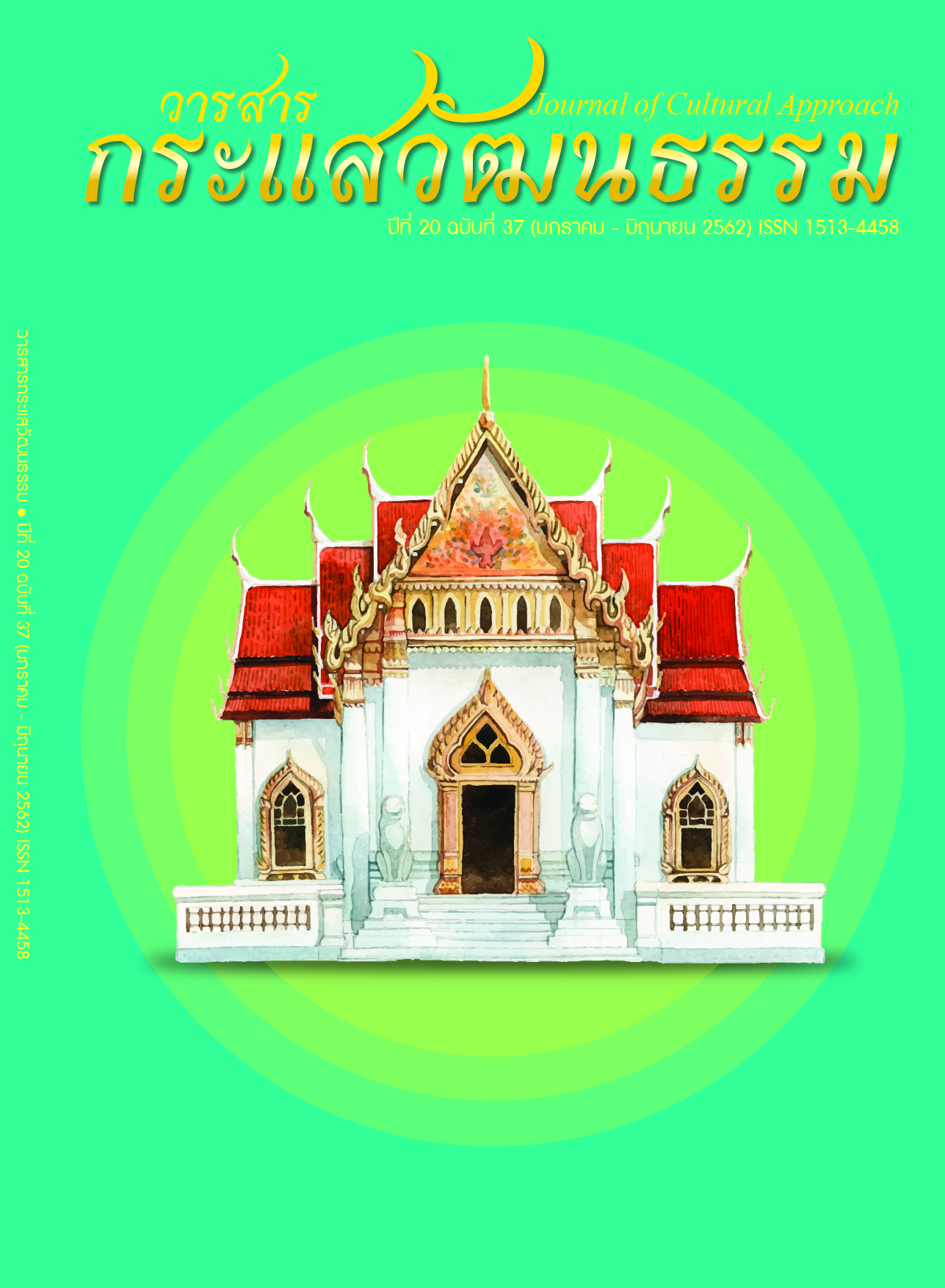Contemporary Sculptures: Decoding the Body of Aesthetic Knowledge Suitable for Public Parks
Main Article Content
Abstract
The purpose of this research was to examine the background, current conditions, problems and body of aesthetic knowledge of contemporary sculptures suitable for The purpose of this research was to examine the background, current conditions, problems and body of aesthetic knowledge of contemporary sculptures suitable for public parks in Thailand. The research area covered Bangkok, Chiang Mai, Phuket, Songkhla, Krabi and Ubon Ratchathani provinces in which there are constructions of contemporary sculpture permanently installed in the public parks. The research procedure used the qualitative research methodology. Data were collected from related literature and field studies using survey, interviews and focus group discussion from a group of 203 informants. The findings were presented by means of a descriptive analysis. The results show that there are 101 constructions of contemporary sculptures permanently installed in 15 parks across Thailand. Saphan Hin Park in Phuket was the first public park to feature a contemporary sculpture in 1969. In Bangkok there are 8 parks containing a total of 40 sculptures, in Chiang Mai there were 2 parks with 43 sculptures (although 1 piece has been stolen and 1 is not at the point of installation), in Phuket there are 2 parks with 2 sculptures, in Songkhla there are 2 parks with 15 sculptures and in Ubon Ratchathani there is 1 park with 1 sculpture. The problems found were generated from a lack of data concerning the background, importance and maintenance of the sculptures and their components. The aesthetics of the contemporary sculptures in the public parks consists of 3 aspects: content, form and relationship with the environment and activities of the people who use the public parks.
Article Details
Proposed Creative Commons Copyright Notices
1. Proposed Policy for Journals That Offer Open Access
Authors who publish with this journal agree to the following terms:
- Authors retain copyright and grant the journal right of first publication with the work simultaneously licensed under a Creative Commons Attribution License that allows others to share the work with an acknowledgement of the work's authorship and initial publication in this journal.
- Authors are able to enter into separate, additional contractual arrangements for the non-exclusive distribution of the journal's published version of the work (e.g., post it to an institutional repository or publish it in a book), with an acknowledgement of its initial publication in this journal.
- Authors are permitted and encouraged to post their work online (e.g., in institutional repositories or on their website) prior to and during the submission process, as it can lead to productive exchanges, as well as earlier and greater citation of published work (See The Effect of Open Access).
Proposed Policy for Journals That Offer Delayed Open Access
Authors who publish with this journal agree to the following terms:
- Authors retain copyright and grant the journal right of first publication, with the work [SPECIFY PERIOD OF TIME] after publication simultaneously licensed under a Creative Commons Attribution License that allows others to share the work with an acknowledgement of the work's authorship and initial publication in this journal.
- Authors are able to enter into separate, additional contractual arrangements for the non-exclusive distribution of the journal's published version of the work (e.g., post it to an institutional repository or publish it in a book), with an acknowledgement of its initial publication in this journal.
- Authors are permitted and encouraged to post their work online (e.g., in institutional repositories or on their website) prior to and during the submission process, as it can lead to productive exchanges, as well as earlier and greater citation of published work (See The Effect of Open Access).
References
[2] Awomeso, J.A., Taiwo, A.M., Gbadebo, A.M. & Arimoro, A.O. (2010). Waste Disposal and Pollution Management in Urban Areas: A Workable Remedy for the Environment in Developing Countries. American Journal of Environmental Sciences, 6(1), 26–32.
[3] Cybriwsky, R. (1999). Changing Patterns of Urban Space: Observations and Assessments from the Tokyo and New York Metropolitan Areas. Cities, 16(4), 223–231.
[4] Dumas, C.F., Burrus, R., Diener, E., Payne, J. & Rose, J. (2007). Valuing the Recreational Benefits of Sculpture in Public Parks. Journal of Park and Recreation Administration, 25(2), 29–41.
[5] Lambert, D. (2014). The History and the Future of Public Parks. In Harney, M. (ed.), Gardens & Landscapes in Historic Building Conservation (pp. 91–100). Oxford: John Wiley & Sons.
[6] Lowell, C., Jordan, D. & Liang, Y. (2009). Management Policy in and Typology of State Park Systems. American Journal of Environmental Sciences, 5(2), 187–196.
[7] McDaniel, J. (2015). Spectacle Attractions and Buddhism in Southeast Asia. DORISEA Working Papers. Retrieved April 10, 2017, from http://www.dorisea.de/de/node/1723.
[8] Morris, E. (2014). Bare in the Open Air: A Statue of Lord Derby and the Political Origins of the Outdoors Statue in Nineteenth–Century Britain. Sculpture Journal, 23(3), 307–316.
[9] Sakip, S.R.M., Akhir, N.M. & Omar, S.S. (2015). Determinant Factors of Successful Public Parks in Malaysia. Procedia–Social and Behavioral Sciences, 170(1), 422–432.
[10] Stalker, D. & Glymour, C. (1982). The Malignant Object: Thoughts on Public Sculpture. The Public Interest, 66, 3–21.
[11] Ujang, N., Moulay, A., & Zakariya, K. (2015). Sense of Well–being Indicators: Attachment to Public Parks in Putrajaya, Malaysia. Procedia–Social and Behavioral Sciences, 202(1), 487–494.
[12] Yee, J. & San, C. N. (2011). Consumers’ Perceived Quality, Perceived Value and Perceived Risk towards Purchase Decision on Automobile. American Journal of Economics and Business Administration, 3(1), 47–57.


